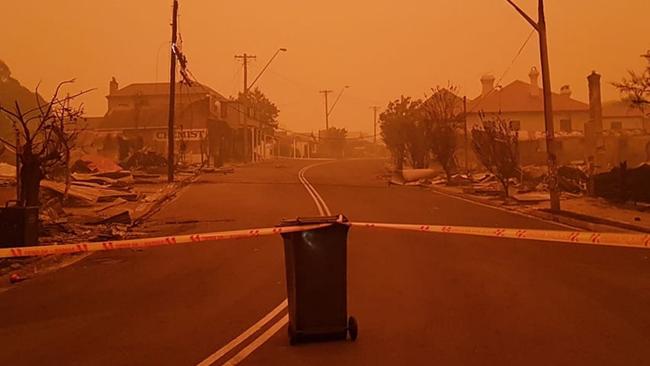Bushfires expose roads and mobile coverage flaws
The summer’s horror bushfires have exposed a critical need to upgrade the nation’s infrastructure assets.

The summer’s horror bushfires, which destroyed millions of hectares of bushland and thousands of homes, have exposed a critical need to upgrade the nation’s infrastructure assets.
Infrastructure Australia says the fires, which the Reserve Bank of Australia estimates will shave off 0.2 percentage points of GDP growth across two quarters, have placed greater urgency on upgrading telecommunication networks and roads.
Infrastructure Australia chief executive Romilly Madew said roads, bridges and telecommunication towers had been severely damaged in the firestorm, leaving those who were trying to evacuate stranded and out of contact.
While road network safety improvements and improvements to telecommunications coverage in rural areas had already been earmarked as a key priority by the body in December, Ms Madew said recent extreme weather had only reiterated the importance of such upgrades.
“We’ve just got to consider the recent bushfires and floods that we’ve had around Australia and the impact that has had on our critical infrastructure,” she said. “We need to be forward-looking and thinking when we’re working on our infrastructure resilience in the future.
“Roads were closed and people couldn’t buy petrol because eftpos machines weren’t working.
“The bushfires have really elevated these issues and parts of these suggested improvements include making sure the NSW Rural Fire Service knows where the (communication) towers are so fire retardant can be placed there. It’s as simple as that.”
Infrastructure resilience was a key theme that emerged from the body’s 2019 Australian Infrastructure Audit. “Compounding issues of unprecedented infrastructure demand, severe drought and other environmental changes require a focus on our resilience strategies and a consensus on where to invest now for our nation’s future prosperity,” Ms Madew said.
The audit in June last year predicted that climate change would have a significant impact on the nation’s critical infrastructure and services as extreme weather become increasingly prevalent.
The audit also found that improvements needed to be made to critical national infrastructure as bushfire seasons grew in length and intensity.
Ms Madew said regional Australia was a key focus of its infrastructure priority list and the body would lobby the government to urgently improve telecommunications and improve road safety.
The audit found that, while Australia’s mobile footprint served more than 99 per cent of the population, it covered only one-third of total landmass.
“Staying connected requires not only safe and efficient transport options, but also ensuring our towns and regional communities have the same access to telecommunications as the rest of Australia,” Ms Madew said.
“This is to also provide people with reliable access to electronic payment systems, emergency alerts, technology innovations and other critical services.”
Ms Madew said that, as an independent advisory body, it was Infrastructure Australia’s role to highlight these problems to spark investment and co-ordinated action from industry and government. “It’s a credible, evidence-based list of opportunities that will help improve quality of life and productivity in Australia,” she said.




To join the conversation, please log in. Don't have an account? Register
Join the conversation, you are commenting as Logout